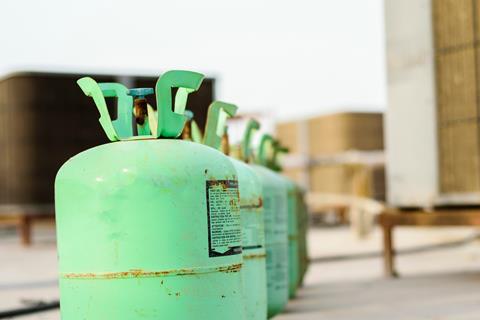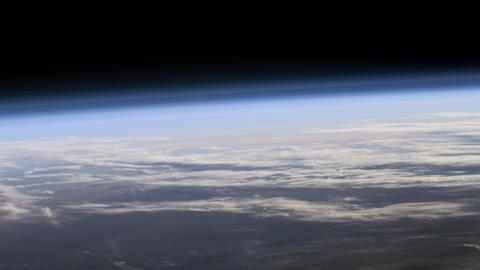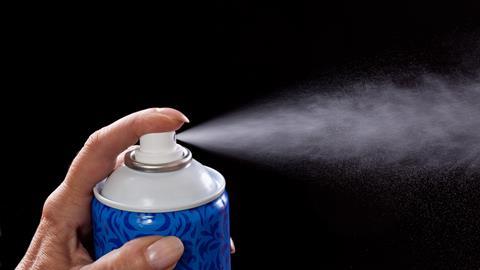Meera Senthilingam
This week, all eyes on the environment as Brian Clegg takes us back in time to an old villain.
Brian Clegg
These days the environmental compound we love to boo and hiss is carbon dioxide, but go back a few years and it was CFCs - chlorofluorcarbons. In the 1970s, this versatile family of compounds was discovered to be attacking the Earth's ozone layer, increasing the levels of ultraviolet light making it through the stratosphere and increasing the risk of skin cancer for the population below.

No one would have given the slightest thought to this possibility back in the 1920s when Thomas Midgley Junior, working at General Motors, was searching for an alternative to ammonia and propane as refrigerants. Midgley had already made his impact on the environment a few years before when he introduced tetraethyl lead to petrol as an anti-knocking compound. Now he was to go from polluting the lower atmosphere to introducing chemicals that would attack the stratosphere.
The existing refrigerants were poisonous and, in some cases, highly flammable. Midgley thought that he had found the ideal replacement - a sentiment that would be generally agreed upon for the next 50 years and was reflected in 1941 when Midgley received the American Chemical Society's highest honour, the Priestley Medal. The chlorofluorocarbons he developed were a family of compounds where all the hydrogen in simple alkanes like methane and ethane were replaced with chlorine and fluorine.
The two most popular of the CFCs, which were collectively marketed under the brand name Freon, were trichlorofluoromethane and dichlorodifluoromethane, Midgley's first contribution to the family, which he developed in just three days. Unlike the earlier alternatives, these compounds were neither poisonous nor flammable. Midgley demonstrated this dramatically as part of his speech at the Priestley medal presentation by inhaling the gas and breathing it gently out over a candle to extinguish the flame. (This trick isn't recommended as high concentrations of CFCs can cause dizziness and cardiac arrhythmia.)

From the 1920s onwards, CFCs became the dominant compounds both in refrigeration and air conditioning, and were also increasingly used as propellants in aerosol sprays because of the dual benefit of low toxicity and lack of flammability. One of the CFCs, chlorodifluoromethane, is also still used on a larger scale when it is transformed into tetrafluoroethylene, which itself forms the basis of PTFE. A variant of a CFC with a bromine atom added, bromochlorodifluoromethane also proved to be an excellent fire suppressant, finding its way into fire extinguishers and fire control systems under the brand name Halon.
What was not to love about these, safe, versatile compounds? The answer first came from environmental scientist James Lovelock. He discovered that CFCs were present wherever he took atmospheric samples, even in the Arctic and the Antarctic. Lovelock did not conclude there was any risk attached, but in 1974 the chemists Frank Sherwood Rowland and Mario Molina, working at the Unversity of California, Irvine, theorized that the CFCs in the atmosphere were anything but safe.
Two factors combined to suggest this. One is that CFCs are very stable in most conditions. This lack of reactivity was part of their attraction in the first place and it means that once in the atmosphere they can remain for at least 100 years, percolating through the atmospheric layers. When the CFCs get as high as the stratosphere, where the ultraviolet radiation from the sun is significantly stronger, they do, finally, react. The energy in the ultraviolet here is sufficient to break the bond between carbon and chlorine, releasing reactive free radicals into the atmosphere.
Once freed, there is a natural reaction partner for chlorine in ozone, the triatomic oxygen molecule. The chlorine radicals act as catalysts for the breakdown of ozone, first stripping an oxygen atom off one ozone molecule to leave normal O2, then in the form of chlorine monoxide taking a second oxygen atom from another molecule of ozone, reinstating the chlorine radical to do more damage.

This is a problem because the ozone layer provides an important shield against incoming ultraviolet. With enough ozone in the way, ultraviolet is absorbed, splitting off an oxygen free radical which soon recombines with a dioxygen molecule to reform ozone. The energy of the incoming ultraviolet ends up warming the atmosphere. But remove a significant quantity of ozone and the amount of ultraviolet getting through to the Earth's surface goes up, bringing with it an increased risk of skin cancer.
Initially the effect was believed to be quite small, but in 1985, scientists from the British Antarctic Survey published shocking results in Nature, showing that what was described as a hole in the ozone layer was forming over the South Pole during the winter. It seems that very high clouds, which only form in extremely low temperatures, help concentrate the chlorine in the stratosphere sufficiently to destroy a majority of the ozone. Although a 'hole' sounds like a complete gap, this is more typically around an 80 per cent reduction in the lower stratosphere, resulting in an overall reduction of ozone of around 50 per cent - not a complete hole, but still plenty to cause concern.
By the late 1970s, CFCs were beginning to be banned in aerosols, and in 1987 the Montreal Protocol was signed, sounding the death knell for CFCs in refrigeration. Since action was taken to reduce output of CFCs into the atmosphere there has been a significant reduction in the impact on the Antarctic ozone layer, though unusually cold weather conditions in the Arctic in recent winters have reversed the trend there and made the depletion comparable with the southern hole for the first time in 2011.
In a way, CFCs had an unlucky break. They turned out to have an Achilles heel when they reached the stratosphere. But no one could argue that these weren't wonder compounds in their day, replacing hazardous chemicals to bring us a world of cool.
Meera Senthilingam
Science writer Brian Clegg there with the cooling and somewhat catastrophic chemistry of chlorofluorocarbons, or CFCs. Next week, we go further back in time and hear a tale of fear and woe.
Phil Robinson
A young man is slumped dejectedly in his chair, head in hands, while the doctor impotently attempts consolation. 'You mustn't be disheartened,' he offers, 'there are many as badly off as you'. Exactly what afflicts the patient remains unsaid but the young man's shame and his grief at the impossibility of a future with his girl obliquely suggest the stigma and nature of the diagnosis. When the young man asks 'Has anyone ever been cured?' the doctor has no words of comfort.
Played today, this scene might suggest to its audience a diagnosis of HIV/AIDS. But this is the opening sequence of a film made in 1940 and the scene itself is set over 100 years before today. The diagnosis is in fact syphilis and the film is Dr Ehrlich's Magic Bullet: a biopic of Paul Ehrlich and the story of the first chemotherapeutic drug: Salvarsan
Meera Senthilingam
And you can discover the chemistry enabling salvarsan to fight the once deadly syphilis by joining Phil Robinson in next week's Chemistry in it's element. Until then, thank you for listening. I'm Meera Senthilingam.













No comments yet